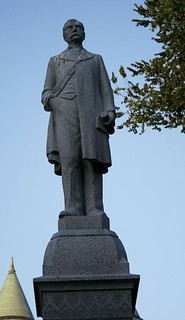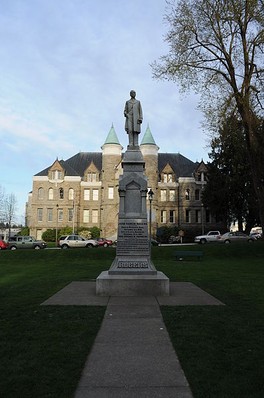John Rankin Rogers Statue
Introduction
Text-to-speech Audio
Images
This statue was dedicated in 1905, four years after Rogers died in office from pneumonia.

The statue is located next to the former state capitol within the center of Sylvester Park.

Backstory and Context
Text-to-speech Audio
John Rankin Rogers moved west as a young man, eventually settling in Kansas in 1876. A farmer of great ambition, he became an early organizer of the Farmers' Alliance, an organization that sought to help farmers work together both economically and politically to improve their condition. Rogers would rise to moderate fame within his circle of like-minded farmers when he became the editor of Wichita's Kansas Commoner. Rogers became a leading voice in the People's Party-a coalition of farmers and others who sought to use the power of the government to assist the productive farmers and workers.
Rogers had previously worked in drug stores and in 1890, he moved to Puyallup Washington and started a drug store. He also became an early leader of Washington's Populist Party. He was elected to the state legislature in 1895 and became famous within the state after proposing and securing the passage of the "Barefoot Schoolboy Bill." The new law created a fund that transferred funds from relatively well-off urban school districts to isolated rural schools with a smaller tax basis.
The following year, Rogers won election to the office of governor-the only Populist governor in the state's history. The populists generated support for many of their policies within the Democratic Party. Recognizing that they needed to merge with the Democrats rather than compete with them in elections, Rogers and others merged with the Democrats and won re-election in 1900. He died shortly after his re-election, leading many in the state to support a movement to create this monument in his honor.
